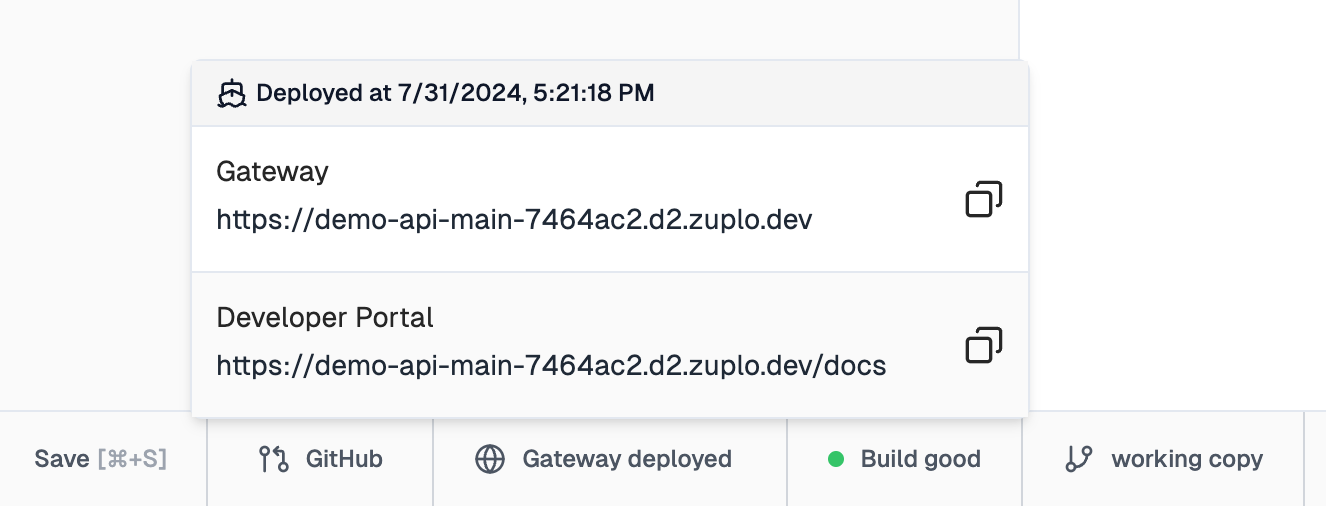Step 2 - Add Rate Limiting
In this guide we'll add Rate Limiting to a route. You can do this for any Zuplo project but will need a route, consider completing Step 1 first.
Rate Limiting is one of our most popular policies - you should never ship an
API without rate limiting because your customers or internal developers will
accidentally DDoS your API. Usually with a rogue useEffect call in React code.
What's a Policy?
Policies are modules that can intercept and transform an incoming request or outgoing response. Zuplo offers a wide range of policies built-in (including rate limiting) to save you time. You can check out the full list.
Zuplo offers a programmable approach to rate limiting that allows you to vary how rate limiting is applied for each customer, or request.
Implementing truly distributed, high performance Rate Limiting is difficult, our promise is that using Zuplo is cheaper and faster than doing this yourself.
1/ Add the rate-limiting Policy
Navigate to your route in the Route Designer (Code > routes.oas.json),
click the Policies dropdown, then click Add Policy on the request
pipeline.

Search for the rate limiting policy (not the "Complex" one) and click it.

By default, the policy will rate limit based on the caller's IP address (as
indicated by the rateLimitBy field). It will allow 2 requests
(requestsAllowed) every 1 minute (timeWindowMinutes). You can explore the
rest of the policy's documentation and configuration in the right panel.

To apply the policy, click OK. Then, save your changes to redeploy.
2/ Testing your Policy
Now try firing some requests against your API. You should receive a 429 Too many requests on your 3rd request.

Your rate limiting policy is now intercepting excess requests, protecting the
getting-started API.
3/ View your API Documentation
Whenever you deploy a new endpoint on Zuplo, it will automatically be added to your auto generated developer documentation portal.
To access your API's developer portal, click the Gateway deployed button in
your toolbar and click the link under Developer Portal.
 You can also find this link in the Getting Started section of the portal, every
time you navigate to your project.
You can also find this link in the Getting Started section of the portal, every
time you navigate to your project.

When you use certain policies like rate limiting, Zuplo will document the responses and headers associated with that policy. As you can see on the right, the rate limiting policy's 429 response has been documented for you.
Another common method of protecting APIs is through authentication, let's add that next.
NEXT Try Step 3 - Add API Key Authentication.